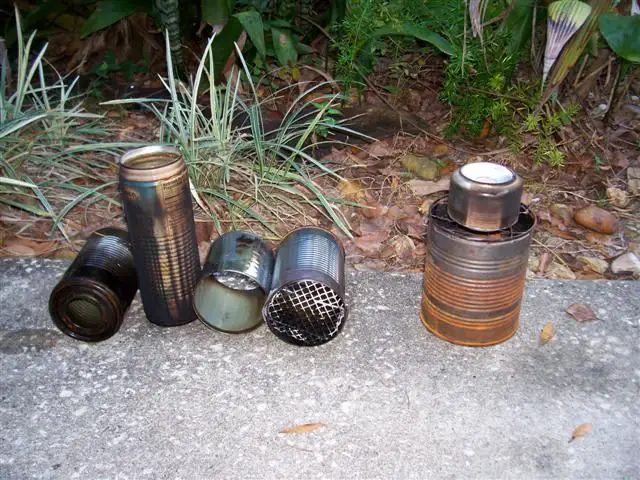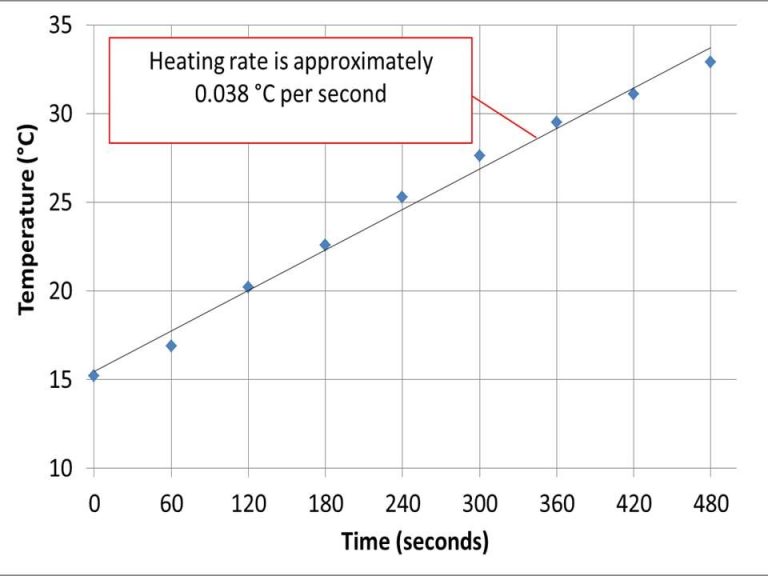Are Empty Glass Candles Recyclable?
Glass candles have become increasingly popular home decor items in recent years. Often beautiful works of art in their own right, glass candles come in all shapes, sizes, and colors. But what happens when these candles have served their purpose and start to collect dust? Are glass candles recyclable?
With sustainability and reducing waste being ever more important, it’s a pertinent question for any glass candle owner. Recycling helps conserve natural resources, saves energy, reduces greenhouse gas emissions, and keeps waste out of landfills. Determining if glass candles can be recycled is key to minimizing their environmental impact.
This guide will provide an overview of glass candle recycling. We’ll look at what glass candles are made of, whether they can be recycled, how to recycle them properly, the benefits and challenges of recycling, and tips for eco-friendly use. Understanding glass candle recycling is important for consumers who want decorative, environmentally responsible home products.
What Are Glass Candles Made Of?
Glass candles are made primarily from silica sand, soda ash, and limestone. These ingredients are melted together at extremely high temperatures exceeding 2500°F to produce molten glass. The molten glass is then poured into molds to create the candle vessels or holders.
The manufacturing process starts with mixing the raw materials and heating them in a furnace. Once the glass reaches its melting point, the molten material can be shaped and worked. The glass is blown or poured into molds to form the various candle holder shapes and sizes. The glass is then slowly cooled in a process called annealing, which prevents internal stresses and cracks from forming.
Additional chemicals can be added to the raw materials to produce different colors, clarity, or properties in the finished glass. Common additives include iron, copper, cobalt, manganese, selenium, or nickel. Decorations, etching, or cut designs may be applied after initial cooling.
The finished glass vessels are inspected for defects and damage. They are then often packaged and shipped to candle manufacturers to be filled with wax, oil, or gel to produce finished glass candles.
Are Glass Candles Recyclable?
Whether or not glass candles are recyclable depends on a few key factors:
What the candle is made of – Most glass candles are made primarily of glass, with metal or paper for the wick and wax or oil for the fuel. The glass itself is usually recyclable, but the other components may not be.
Facilities in your area – Not all recycling centers accept glass candles. Some may only take glass bottles and jars. Check with your local facility to see if they can process recycled glass candles.
Candle design – Jar candles or votive candles are easily recyclable since the glass is separate from other materials. Pillar candles or other designs that incorporate the wick and wax into the glass may not be as recyclable.
Residue – Candles with wax remaining inside may be rejected by some recycling programs, so you’ll need to clean them thoroughly before recycling.
The pros of recycling glass candles include reducing waste sent to landfills, reusing the glass, and saving energy vs. creating new glass. Cons are the limitations on what styles can be recycled and the effort to properly clean and prepare the materials.
How to Recycle Glass Candles
If you want to recycle your empty glass candles, there are a few simple steps to follow:
Preparing Candles for Recycling
First, make sure the candle is completely burned and cooled. Scrape out any remaining wax with a knife or spoon and clean the inside of the glass thoroughly so no wax remains. The glass cannot be recycled if there is any wax, dye, or additive left behind. Remove any labels, decorations, or metal parts from the glass container as well. These contaminants have to be disposed of separately.
Second, check if the candle glass is recyclable. Glass that is tempered, frosted, or lead crystal is often not accepted for recycling. Clear, untreated glass has the best chance of being recycled. Mason jars and drinking glasses are ideal.
Finding Recycling Centers
Check with your local municipal recycling program to see if they accept empty glass candles. Many curbside recycling programs do not take glassware or ceramics. You may need to bring the cleaned glass to a drop-off recycling center or arrange a special pickup.
Call ahead to recycling centers and receives stores that take used goods to make sure they will accept glass candles. Some locations may even pay by the pound for recycled glass. Just be sure to keep the glass separated from other materials like paper, metal, and plastic for easier processing.
With some simple preparation and research, those used up glass candles can be successfully recycled and given new life in glass products.
Benefits of Recycling Glass Candles
Recycling glass candles provides important environmental and economic benefits. When glass candles are recycled rather than thrown away, it helps reduce the amount of waste sent to landfills. Recycling glass also conserves natural resources and energy.
On the environmental side, manufacturing products from recycled glass generates 20% less air pollution and 50% less water pollution than manufacturing from raw materials. Recycling glass decreases greenhouse gas emissions from landfills and incinerators. It also reduces the need for extracting and transporting new raw materials for making new glass products.
Economically, recycling glass candles creates more jobs and is often cheaper than extracting new raw materials. The glass recycling industry employs over 20,000 Americans. And manufacturing with recycled glass costs 30% less than using raw materials. This makes recycled glass products more affordable. Recycling also saves cities money on waste disposal costs.
Overall, recycling glass candles rather than throwing them away is better for the environment and provides economic advantages. Recycling reduces waste, conserves resources, creates jobs, and lowers manufacturing costs. With all these benefits, it’s clear why recycling glass candles is so important.
Challenges of Glass Candle Recycling
While glass candles are technically recyclable, there are some challenges when it comes to actually recycling them. Two of the biggest challenges are contamination and lack of infrastructure.
Contamination occurs when glass candles contain non-recyclable components like metal, wax, dyes, or paint. Most recycling facilities are not able to properly separate out these contaminants from the glass. If too much contaminated glass ends up in the recycling stream, it can ruin an entire batch of recyclable glass.
Lack of infrastructure is another obstacle. Not all communities have glass recycling collection services or facilities. Hauling glass long distances to a recycling center can be cost-prohibitive. And glass recycling requires specialized equipment that smaller recycling operations may not invest in. As a result, some glass candles end up in landfills simply due to lack of accessible recycling options.
With proper care and cleaning, glass candles can be recycled. But overcoming issues like contamination and infrastructure limitations remains an ongoing challenge requiring consumer awareness and industry investments.
Tips for Eco-Friendly Candle Use
If you want to reduce your environmental impact when using candles, here are some tips:
Buy Recyclable Candles
Look for candles made from natural soy, beeswax, or other biodegradable materials. Avoid paraffin wax candles, which are made from petroleum. Recycled glass candles are also a good option. When buying, check labels for info about recyclability and sustainably sourced materials.
Proper Disposal
Never throw candle glass into the garbage. The glass should be cleaned of leftover wax and recycled whenever possible. Check with your local facility about how to properly recycle candle jars. Many municipal recycling centers accept glass candles. You can also reuse the glass jars for small storage or craft projects before recycling.
Additionally, leftover candle wax should be allowed to fully harden before disposing to avoid clogs. Hardened wax can go in the regular trash. For large amounts of wax, check if your facility allows it to go in the recycling bin.
By purchasing consciously and disposing properly, you can enjoy candles while minimizing your environmental footprint.
Innovations in Sustainable Candles
In recent years, there have been exciting innovations in developing more eco-friendly candle options to reduce waste:
New Materials
Many companies are exploring alternative renewable materials to replace paraffin wax, which is derived from petroleum. Some promising options include:
- Beeswax – Made from honeycomb, beeswax is a natural wax that is biodegradable and renewable.
- Soy wax – Derived from soybeans, soy wax is a renewable and clean-burning alternative to paraffin.
- Palm wax – Sourced from palm plants, palm wax is a vegan alternative that is biodegradable.
- Coconut wax – Made from coconut oil, coconut wax is a sustainable option that burns cleanly.
Reusable Options
Reusable candles help reduce waste by eliminating the need to throw away glass containers. Some reusable candle options include:
- Wax melts – Small pieces of wax that can be warmed in a wax warmer and reused.
- Votives – Small refillable candles designed to fit in reusable holders.
- Floating wicks – Wicks that float on a pool of melted wax and can be continually reused.
These innovations allow consumers to enjoy candlelight more sustainably and with less waste.
The Future of Glass Candle Recycling
Looking ahead, there are two key ways we can improve glass candle recycling rates and reduce the number that end up in landfills:
Improving Infrastructure
Many municipalities currently lack the infrastructure needed to efficiently collect and process glass for recycling. Expanding recycling facilities and programs to handle the unique challenges of glass candles and containers would allow more of these items to be properly recycled. This involves investments in sorting technology, transportation, as well as partnerships between local governments, retailers, and recycling processors.
Increasing Consumer Awareness
Consumers also need to be better educated on how and where to recycle glass candles properly. Simple steps like removing any remaining wax or wicks, as well as keeping colors separate, can go a long way in improving the recyclability of used glass candles. Outreach through retailers, community groups, and public service campaigns can all help increase awareness and motivate behavior change when it comes to recycling.
With more supportive infrastructure and informed consumers, glass candle recycling can continue to grow and keep thousands of tons of glass out of landfills each year. The future looks bright for finding more sustainable solutions for these popular decorative and fragrant items.
Conclusion
When it comes to recycling empty glass candles, the key takeaways are:
- Glass candles are made from soda-lime glass, the same material used in glass bottles and jars.
- Yes, glass candles can be recycled, as long as any wax residue is removed first.
- The best way to recycle glass candles is to take them to your local recycling center.
- Recycling glass candles reduces waste and conserves natural resources.
- However, some curbside programs don’t accept candle glass.
- Consider switching to eco-friendly candle options like soy, beeswax, or rechargeable LED candles.
When finished with glass candles, first wipe off any remaining wax. Then check if your curbside pickup takes glass candle jars. If not, locate your nearest glass recycling center to properly recycle empty candle glass. With some care and research, we can minimize waste from glass candles. Choose earth-conscious options whenever possible, and recycle properly when candles are finished.
Now that you know the ins and outs of recycling glass candles, you can make eco-friendly choices for yourself and the planet.


